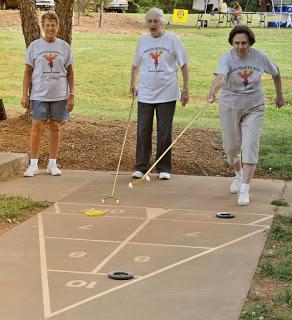
Photo by St. Murse
Body Mass Index, also called BMI, appears to be a simple tool for determining a healthy ratio between height and weight.Not so.
Most people will agree to the truism that a person should not be too underweight or too overweight. People should be just the right weight.
The BMI categories as published by the CDC are as follows:
Underweight = <18.5
Normal weight = 18.5 - 24.9
Overweight = 25 - 29.9
Obesity = BMI of 30 or greater
But the borders between these four categories are hotly debated as is the more general idea of "ideal weight." Public discourse on body image, body shaming, lookism, and other related topics make this an intense topic.
I am not seeking to judge anyone or dictate a course of action.
Note: The function of this post is only to raise awareness. It is not offering medical advice. If you have concerns about your BMI, please see a licensed medical professional.
For this reasons of controversy and complexity of methods of measurement, I have procrastinating writing about this particular biomarker as part of this series on 18 biomarkers of health and longevity.
According to this BMI Calculator, hosted by NIH, my own BMI has varied over the years of physical (and legal) adulthood from a BMI of 18.6 (point one away from Underweight) to a BMI of 25.4 (point six away from Overweight).
Measurement Tools
I have used a tape measure and a scale primarily; however, I have had skin calipers tests (aka skinfold measurements or pinch test) used by my GP, by a university research team, and by a fitness trainer at the YMCA.
I have also had a DEXA scan (for bone density and ratios of muscle, fat, and bones) at Wichita State University as part of a battery of tests done for research participants 50 plus.

Photo by Mecklenburg County
If you want to dive deeper into the range of BMI measurement tools available, this article briefly describes 7 different methods for assessing BMI. But not being an elite athlete or a person with heart disease, pursuing more methods of measurement seems like overkill.I tend to use a bathroom scale, a tape measure, and the very informal and problematic method of "how my clothes fit." As an adult, I have gone down to a 0 and up to a 12. That's a pretty big range. The ideal is probably somewhere in the middle of those dress sizes.
(Caveat: I have often wondered, are clothing manufacturers making these sizes bigger to assuage the egos of Americans with expanding waistlines. That's another topic for another day.)
Be Well!
However you measure, assess, and respond to the BMI biomarker, I wish you all the best in the pursuit of a long health span.
Related:
Biomarkers (18) for Longevity and Health
Weight-Hip Ratio: Biomarker of Health
Daily or Weekly Weigh Ins?
Goodbye Size 4

